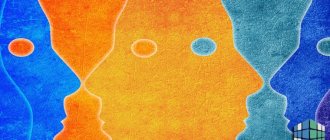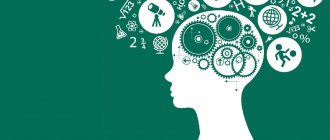Behaviorism: The Science of Behavior: Freepick What Mysteries Can Psychology Reveal? How does behavioral science predict a person's actions and behavior in different situations? Behaviorism provides the keys not only to understanding, but also to managing human behavior. Let us briefly consider the basics of this trend, as well as its most prominent representatives.
Psychology as a science of behavior briefly
Psychology has many facets, and the subject of psychology is understood differently depending on its direction. Thus, behaviorism studies the reactions of individuals to various events, that is, in fact, it is the science of human behavior.
How and why did behaviorism arise? It is worth briefly saying that this trend is quite young, it originated a hundred years ago and has become a radically new psychological approach. His task was defined as follows: the study of human behavior from the point of view of reflexes. The methodological apparatus of the new direction included observation and analysis.
Psychology as a science of behavior has become a kind of protest against the speculativeness of conclusions and descriptions based on metaphors. The new direction placed emphasis on practical rather than theoretical psychology.
Here's an example of how behavioral science works. John Watson, the founder of behaviorism, believed that people's reactions to various actions could be predicted. He confirmed this with the following experiment:
- A small group of children gathered for the experiment. They brought rabbits.
- The kids had a natural desire to pet the animals.
- When trying to do this, the child received a weak electric shock.
- The next day, when they saw the rabbits, the children began to cry, as they remembered the previous experience.
- The scientist gave them sweets, continuing to keep the rabbits nearby.
- Gradually the distance shortened, and at the end of the experiment the children again willingly played with the animals.
Thus, according to the theory of behaviorism, human behavior is determined primarily by unconditioned reflexes. Knowing the incentives and reactions of a person to various factors, his behavior can be predicted and, accordingly, his personality can be controlled.
The Human Brain and Behavior: Freepick
Over the past century, several trends have emerged within behaviorism:
- Methodological (Watson's behaviorism). It assumes that only public events (a person’s behavior) are amenable to objective observation, and his personal feelings and thoughts can be ignored.
- The radical (Skinner's behaviorism) direction takes into account, along with external ones, also internal events in a person's life. It is believed that changes in the environment affect both them and their behavior.
- Teleological (target). Engaged in objective observations, contrasting them with the cognitive process.
- Theoretical behaviorism takes into account internal (invisible) processes.
- Biological (behavioral systems theory) focuses on conscious and unconscious processing of data.
- Psychological, which focuses on methods of practical control of human behavior.
In the modern world, behaviorism has found wide application. He is especially favored by, for example, sales managers and politicians who are interested in this knowledge. The method is also used by practicing psychologists to help people fight phobias and fears.
But this trend also has its drawbacks. Its basis is the general reactions of a person; it does not take into account the temperament and characteristics of his character. For this reason, manipulating the behavior of others is often much more difficult, and reactions are difficult to control.
Studying an individual at first meeting
To understand how an individual's behavior will change, you need to pay attention to various factors. The first acquaintance can provide a lot of truthful information about the individual.
Appearance
First you need to look at the individual's clothing. It can be used to determine tastes, mood, and wealth. Peculiarities:
- If a man is wearing expensive clothes, but they are untidy, most likely he is a materialist who is looking for a beautiful companion.
- A woman with bright makeup and a lot of precious jewelry is trying to attract attention. For her, the priority is not feelings, but material values.
- People who dress modestly, but their clothes are ironed and clean are punctual individuals who love to work, appreciate care and love.
You also need to pay attention to shoes. An intelligent, educated, punctual person is characterized by clean, well-groomed shoes.
Actions
Actions are the main factor by which an individual must be judged. An individual can say anything, but how he acts, especially in small things, speaks about his nature. For example, a girl will be pleased to see a guy open doors for her, help her carry a bag or packages, or offer his hand when getting out of a vehicle or car. To impress a girl at the first meeting, a guy needs to choose an interesting place for a date, give her flowers, and give her a few compliments. For the first meeting, these manipulations are enough to make a positive impression.
Hand movements and handshakes
A handshake will help you recognize your identity. This gesture has many interpretations, depending on the position and movement of the hands. Explanation:
- If, when shaking hands, the interlocutor holds his hand at a right angle and presses his elbow tightly to the body, he believes that he has already done too much for you by simply meeting. It is useless to ask him for anything.
- If, when greeting, the interlocutor presses his hand to his body, thereby forcing people to reach out to him, the interlocutor values only his own opinion and will talk more about himself.
- The interlocutor extends his hand far to say hello. This indicates that he needs support. Such people can be manipulated; they act similarly to their idols. They constantly try to imitate someone.
- The individual immediately extends his hand. This may indicate that the person is an extrovert and tries not to detain the interlocutor without reason.
- When shaking hands, the individual extends only the fingertips. This means that in front of you is a very slippery type who will praise himself in words, but in reality everything will turn out to be a lie.
Firm handshakes that make you try to get rid of a grip come from people who want to harm others, are looking for conflict situations, or want to create them.
People who shake hands with both hands at the same time are trying to show their friendliness, but this is a lie.
Pose and facial expressions
Attention should also be paid to the posture and facial expressions of the individual. Explanation:
- hands behind your back, head raised up - arrogance, pride;
- hands on hips, body stretched forward - self-confidence;
- the individual rests his hands on the table - the interlocutor cannot establish contact with the partner;
- the head is tilted to the side - a sign of interest.
- the head is tilted down - the interlocutor has a negative attitude towards statements;
- subject sitting on the tip of a chair - apprehension;
- arms crossed on chest - skeptical defense.
Deciphering facial expressions:
- frequent smile - the interlocutor wants approval;
- when smiling, the lower eyelids do not rise - lack of sincerity;
- a smile with raised eyebrows - the subject is ready to obey;
- crooked smile - the interlocutor experiences increased nervousness that he cannot hide;
- nose wrinkled, lower lip protruded - aversion to something.
By facial expressions and posture you can learn a lot of details about your interlocutor.
Intonation and words
Words and intonation can say a lot about a person’s upbringing and behavior in society. With any manifestation of rudeness or increased tone, you need to stop communicating with your interlocutor, as this can lead to the development of a conflict situation.
Psychology as a science of behavior: representatives
The primacy in the justification and development of behaviorism belongs to the American scientist John Watson. In 1913, the researcher made a report in which he clearly outlined the essence of the new theory.
The main finding was that a stimulus elicits a specific response. According to Watson, in order to understand the characteristics of an individual, it is necessary to observe him. The right approach helps to predict a person’s reactions to various actions. The basis of the direction was the physiological theory of reflexes.
Founder of Behaviorism John Watson: Gettyimages
The following scientists agreed with Watson and supported his ideas:
William Hunter
This scientist is responsible for the substantiation of the theory of delayed behavior. Its meaning is that a stimulus can be given to a person now, and a response can be received later. Hunter conducted his experiments on monkeys:
- placed a box of bananas in the room;
- fenced it off with a screen;
- observed the reactions of animals;
- after a while he rewarded the primates with fruit.
Carl Lashley
The relationship between stimuli and the central nervous system was studied by Karl Lashley. The scientist conducted experiments with animals: he taught them certain skills, and then removed parts of the brain. This made it possible to determine the interchangeability of brain regions.
Burress Skinner
Contributed to the development and popularization of behaviorism:
- Developed the theory of operant conditioning. In it, the scientist substantiated that behavior causes changes in the environment, which subsequently shape behavioral characteristics.
- Contributed to the development of programmed learning.
- He wrote fiction and journalistic works about behaviorism.
Skinner confirmed his theoretical work experimentally using functional analysis. Their goal is to study, predict and control human behavior by managing the environment.
Edward Thorndike
The scientist has a theory according to which consciousness is considered as a system of connections united by associations. Thorndike proposed the law of exercise and effect. It is explained as follows: the more repetitions of an action are performed, the more strongly it is imprinted in consciousness.
Edward Thorndike: Facebook/@afender2017
Edward Tolman
Tolman developed the standard theory of behaviorism, which was proposed by Watson, and began to develop cognitive theory. According to his approach, stimulus and response are separated by special gestalt signs, the basis of which is cognitive maps.
He proved his theory with experiments on rats. They could find a new path to the feeding trough if the previously mastered path for some reason turned out to be inaccessible.
Neil Miller
The scientist was engaged in research in behavioral psychology. The behaviorist concept was used in the study of concepts such as motivation, aggression, frustration, as well as in conflict management and psychotherapy. The researcher was interested in the physiological mechanisms that underlie drives and reinforcements, brain electrophysiology, and psychopharmacology.
Psychology is one of the most mysterious sciences, because the subject of its knowledge is the inner world of man. The mysteries of psychology have been solved by entire generations of scientists. New discoveries by experimenters not only bring answers, but also become a source of questions.
Psychology as a science of behavior remains relevant. It continues to develop and discover unknown facets of the human psyche. But still, accurately predicting human behavior remains a fantastic task, since it is influenced by many factors and not all of them can be assessed and determined in advance.
Original article: https://www.nur.kz/family/self-realization/1767841-psihologia-kak-nauka-o-povedenii-ucenye/
How can you tell by gestures that a person is lying?
Psychologists identify a number of movements and gestures that can indicate that the interlocutor is lying:
- The subject takes a step back. This movement indicates that the interlocutor feels increased discomfort when answering. So he tries to increase the distance.
- Crossed arms. This gesture cannot be unambiguously equated with the fact that the individual is lying. It may indicate deception or increasing discomfort, a defensive stance.
- Turn in any direction. This movement symbolizes the same thing as a step back. The point is to increase the distance.
- If the interlocutor hides his hands in his pockets when answering, it means he is not answering sincerely.
- Subject covers his face. This is one of the signs of deception.
- Any reservations indicate that the individual does not believe what he is saying.
- Long pause. If the interlocutor can answer the truth, he will do it quickly. Any delay indicates that the subject needs time to come up with an answer.
- After the question, my eyes begin to wander.
- A long gaze fixed at one point.
- Pursed lips.
More often than not, such factors manifest themselves in complex ways.
Psychologists have been studying behavioral patterns for several hundred years. The data obtained allows us to predict a person’s actions in any situation and distinguish truthful answers from lies.
Types of psychology.
Do you want to make better decisions, find your ideal career, realize your maximum potential and receive instructions for individual development?
?
All this can be done using the Human Design
. Build your map and get basic transcripts for free.
Traditionally, all types of psychology are divided into two large groups:
- Academic is science for science's sake. It studies mental manifestations characteristic of people (or animals) in general, and derives generalized dependencies between events or phenomena in all spheres of mental life. Its goal is to develop a theory, identify patterns in the individual and group psyche of people, and study individual psychological phenomena. This is a scientific basis that combines the fundamentals of psychological science and creates conditions for its development.
- Applied (practical) is a science aimed at obtaining a specific result. She explores ways to apply scientific knowledge to everyday life or profession. Its goal is to develop specific recommendations for improving mental life, as well as to receive the very feedback that makes it possible to check the plausibility (or implausibility) of scientific theories. Applied science is closely related to psychiatry, psychotherapy, educational work, and training.
Types of psychology answer the question: how does psychology work. What exactly psychological science does can be understood by studying its sections, directions, and spheres in more detail.
Main sections of academic psychology.
Branches of psychology are formed on different grounds: according to the purpose of the activity, according to the subject or object of research, according to connections with other research practices:
- Age - studies psycho-emotional activity and personality formation at different stages of life from birth to death (childhood, adolescence, gerontopsychology).
- Social – studies the patterns of life of people included in social groups or communities.
- Differential - studies individual psychophysiological differences between people, behavioral characteristics, and individual properties of higher nervous activity.
- Abnormal - studies the manifestations of various disorders in the functioning of the brain.
- Clinical (medical, pathopsychology) – studies mental phenomena from the point of view of their relationship with diseases.
- Cognitive – studies the cognitive processes of the human psyche (focused on the study of feelings, memory, imagination, willpower, logical thinking).
- Advisory – systematizes and describes the processes of providing psychological assistance.
- Animal psychology does not study the psyche of animals in itself, but in order to explore the premises of human consciousness.
- Pedagogical – develops the psychological foundations of teaching and upbringing.
- Psycholinguistics - studies the inner world of a person who interacts with the world through speech.
Take the EQ emotional intelligence test
Main sections and directions of applied psychology.
Applied psychology is a vast, branched network of branches and disciplines, within which there are many subcategories related to each other and to other sciences. The areas of applied psychology are:
- Psychocorrection: targeted impact on the psyche in order to bring it into line with age or other standards.
- Psychodiagnostics: development and application of various methods for recognizing the psychological characteristics of a particular person or group of people (testing, questionnaires).
- Psychotherapy: providing psychological assistance to mentally healthy people, as well as clients with personality disorders.
- Psychological counseling: helping mentally healthy people in difficult life situations.
Applied science combines fields aimed at providing practical help to people who need it. Regardless of origin, status, age, those who can seek psychological help:
- Does not or cannot communicate with others or establish social connections.
- Plans or builds his own business.
- Is in constant conflict with others or with himself.
- He is going through a difficult life situation.
- Feels that the relationship with her partner is on the verge of breaking.
- Concerned about the behavior of teenage children.
- Experiences constant apathy, loss of strength, aggression, irritability.
- Suffers from panic attacks, phobias, and fears.
- Can't cope with his bad habits.
- Wants to choose a profession or is thinking about changing profession.
The emergence of psychoanalysis
As you may have noticed, early psychology was focused on the study of the conscious mind. But in the late 19th century, the Austrian physician Sigmund Freud theorized about the importance of the unconscious, thereby undermining faith in the rational nature of the mind.
According to Freud, behavior is largely determined by past experiences (including early childhood memories) and internal impulses that a person is not even aware of. The unconscious is formed through repression, a process in which anxious experiences and repressed feelings move from the conscious mind into a reservoir, becoming part of the unconscious. To explore its contents, the father of psychoanalysis relied on hypnosis and dreams in an attempt to decipher the hidden meanings within them.
Although Freud's theory caused an avalanche of criticism in its time and is still perceived with skepticism, its influence on psychology is undeniable. We don’t know whether Freud was right, but we are sure that understanding the basics of psychology is simply necessary. What motivates us? Why do we act this way and not otherwise? How to understand the motives of other people's behavior? Our free online course “Human Psychology” will help clarify the situation. Read and be amazed at how beautiful this science is and how deep the human psyche is.
Why study psychology?
There is no clear answer to this question. Or rather, everyone has their own answer:
- Because psychology affects all key aspects of life: everyday life, work, partnership, education, business, self-realization.
- Because we live among people and want to understand their motives, take into account the peculiarities of their psyche, predict decisions, and navigate other people’s characters.
- Because childhood grievances interfere with life, even if we don’t remember them.
- To manage your inner resources, live life to the fullest.
- To motivate yourself at the right time or notice fatigue in time and rest.
- To understand why it hurts somewhere inside or why the “soul hurts.”
- To understand why some people evoke sympathy, while others evoke aggression or rejection.
- To recognize, but not succumb to other people's manipulations.
- To develop your memory, thinking, creativity voluntarily, and not because “it’s customary.”
- To understand why previous relationships fell apart, to build new, but stronger ones.
- To learn to understand your children or parents, regardless of the age difference.
- Just for myself.
Where to start studying?
First of all, one should not confuse academic psychologists and practicing psychologists. Most scientific books are written in a dry, rather difficult to understand language with scientific terms. Therefore, it will be difficult to learn psychology “for yourself” from the works of Freud or Jung. But there are also a lot of books on popular psychology that you won’t be able to study at the same time. Therefore, first you need to ask yourself a question: what motivates me, what is most important to me?
General outlook.
- Paul Kleinman, Psychology: People, Concepts, Experiments.
- D. Goleman “Emotional Intelligence.”
- D. Halliman “Why We Make Wrong: Thinking Traps.”
Child psychology.
- Yu. Gippenreiter “The most important book for parents.”
- Archpriest Fyodor Borodin “Create love. How to raise a happy child."
Psychology of creativity.
- Austin Kleon, Steal Like an Artist.
- Barbara Sher "What to Dream About."
Psychology of success.
- K. McGonikal “Willpower: develop and strengthen.”
- Ray Dalio "Principles".
- Chin-Ning Chu "Stone Face, Black Heart"
Psychoanalysis (Freudianism) sought to find a way out of the crisis within the framework of medicine and psychology itself.
Psychoanalysis sought to fill psychological knowledge about a person with new life truth, build a theory and obtain information that is useful for solving practical psychological, primarily therapeutic, problems. It is no coincidence that S. Freud (1856-1939) began his scientific research with the analysis and generalization of psychotherapeutic practice and only then turned the accumulated experience into a psychological theory.
In psychoanalysis, psychology regained the living person and, since ancient times, its inherent depth of penetration into the essence of his soul and behavior. Carried away by his theoretical reasoning, S. Freud retreated further and further into the realm of formal reasoning, often speculative and unsubstantiated.
The key concepts of psychoanalysis are “consciousness” and “unconsciousness”. The latter was assigned a particularly important role in determining human behavior. S. Freud wrote that there is strong evidence that subtle and difficult intellectual work, which requires deep and intense thinking, can take place outside the sphere of consciousness, that there are people “in whom self-criticism and conscience ... turn out to be unconscious and, remaining as such, determine most important actions." According to S. Freud, guilt can also be unconscious.
At first, the attitude towards Freudianism was critical. Later, Freudianism became widespread in many countries, including Russia. The number of followers of S. Freud is very significant. These, in particular, include A. Adler (1870-1937), K.G. Jung (1875-1961), G. Sullivan (1892-1949), E. Fromm (1900-1980), etc.
The problems and the basic system of concepts that proponents of this direction use to solve them have much in common with the theory of S. Freud, although a number of problems and concepts presented in this direction are radically different from it.
But, nevertheless, Freudianism and neo-Freudianism are united by the belief in the existence and special role of the unconscious in the human psyche and behavior, the conviction that a person has many stable negative phenomena, “complexes.”
A. Adler denies the direct dependence of human psychological development on organic factors. From the first years of life, a child has a pronounced, deeply felt feeling of his own inferiority, which he strives to overcome in his life experience, to find and prove his ability to overcome the feeling of natural weakness. In addition to the inferiority complex, a child from the first years of life, in this concept, is ascribed to the desire for creative self-improvement.
3 pages, 1113 words
Individual human properties as prerequisites for personality development
... firstborn, only child, middle child and last child in the family. The last construct that is emphasized in individual psychology is social interest - a person’s internal tendency to participate ... projection - the personality as a subject of activity. A.N. Leontiev noted that at a certain stage of personality development - at the turn of its transformation from an “element” that assimilates in the course of its...
A person is considered initially as a being striving for a certain life goal, acting mainly rationally, actively, expediently and deliberately, and not passively and reactively.
The goals of life are determined by the person himself. Much in a person’s behavior depends on the nature of these goals: under their influence, he forms images, memory, develops certain personality traits, inclinations and abilities, moral character, affects and feelings.
Another concept of psychoanalysis, called “analytical psychology,” was developed by K.G. Jung. The psyche, according to K. Jung, is a complex whole, the individual, independent parts of which are peculiarly separated from each other. The center of human individuality is the so-called “I complex”. There are two types of unconscious associated with it: personal and collective. The first is represented by what a person has acquired through individual life experience; the second is transmitted to him by inheritance and reflects the general experience accumulated by humanity.
The personal unconscious “contains complexes” that belong to the subject and form an integral part of his psychological life. The collective unconscious includes myths, primitive forms of thinking, impressions and images deposited in the human brain since ancient times and passed on from generation to generation. They can manifest themselves, for example, in dreams, the content of which seems to take a person back to the distant past.
Jung's important contribution to psychological science was the introduction of scientific ideas about two types of personality with an introverted and extroverted attitude. The first is characterized by turning inward in search of reasons that explain the actions performed; the second is characterized by a tendency to respond vividly to external influences and find the origins of behavior in them. Both tendencies, to one degree or another, are characteristic of all people, but are represented in their psychology and behavior in different proportions. Introverts are people in whom the first tendency clearly dominates the second, and extroverts, on the contrary, are those individuals who are characterized by a clear predominance of the second tendency. Observations showed the correctness of this division and then personality tests were developed.
E. Fromm is the author of the concept of “humanistic psychoanalysis”. Follower 3. Freud about the biological conditioning of the human psyche and behavior. E. Fromm: they are socially determined.
A person’s character is created by society and the circumstances of his life. Where personal freedom is suppressed, pathological characters arise. The most typical of them are conformism, masochism, sadism, a tendency to destruction and recluse.
Methods of psychology.
Almost all methods of psychology can be combined into two groups:
- Empirical. Based on the collection, recording, and interpretation of facts. They use methods of mathematical statistics that allow them to work with large volumes of data and build patterns.
- Experimental. Based on modeling situations of interaction between the individual and the environment, where the necessary psychological reactions could be observed. These are the so-called social experiments (Stanford prison experiment, M. Sheriff's cave of robbers, Stanley Milgram's obedience experiment).
The main object of psychological research is human psychology, therefore science uses the same research methods that can be applied in everyday life:
- Observation is a descriptive method that involves purposefully perceiving and describing a person.
- An experiment is a specially conducted psychological experience that helps to gain new knowledge about the subject.
- Self-observation is a purposeful and meaningful observation of one’s emotions, reactions, desires, motives, which should not develop into self-digging.
- An interview is an oral or written conversation that helps clarify and identify a range of problems that are not observable.
- A survey is a short-term written or oral test with pre-formulated questions that helps assess and identify individual psychological differences, skills, and abilities.
- Testing is the study, identification, assessment of certain psychological qualities after passing specially prepared tests.
- Biographical research is a method in which a person’s life path is studied, diagnosed, corrected, and predicted.
As a rule, in order to provide the psychologist with the most accurate and comprehensive psychological portrait of the interlocutor, methods are combined for each specific case. For example, tests and interviews may be used in hiring. During a psychotherapy session, a psychologist can use observation and experimentation, and ask the client to do his homework - to observe himself.









